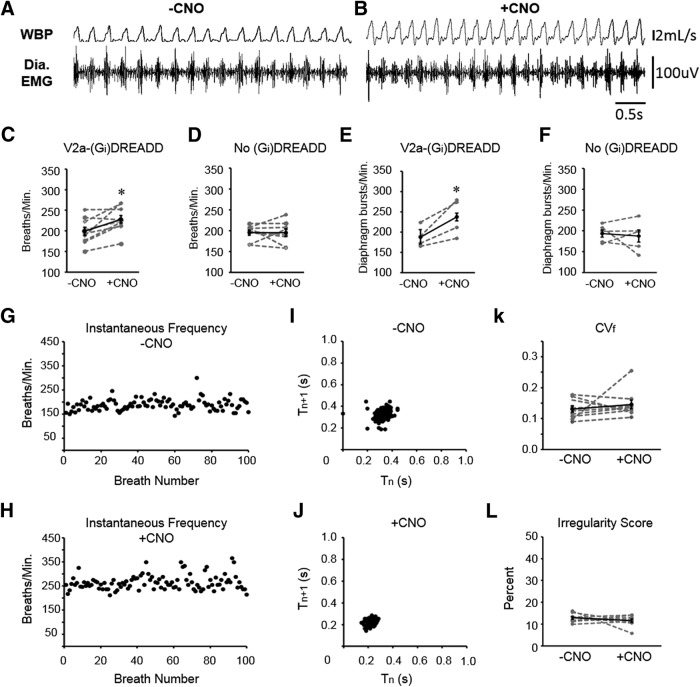Figure 3.
Decreasing the excitability of V2a neurons increases breathing frequency without causing irregular breathing in adult V2a-(Gi)DREADD mice. A, B, Representative traces of WBP and diaphragm EMG following injections of vehicle (A) and subsequently 10.0 mg/kg bw CNO (B) into the same V2a-(Gi)DREADD mouse on the same day. C, D, Instantaneous respiratory frequency was assessed in V2a-(Gi)DREADD mice (C) and non-DREADD (Chx10Cre/+) control mice (D) by WBP after injection of vehicle (-CNO) and CNO. E, F, The instantaneous bursting frequency was calculated from the RMSpeak of the diaphragm EMG signal in V2a-(Gi)DREADD mice (E) and non-DREADD control mice (F) after injection of vehicle (-CNO) and CNO. G, H, Instantaneous respiratory frequency is plotted for 100 consecutive breaths in a V2a-(Gi)DREADD mouse injected with vehicle (G) or 10.0 mg/kg bw CNO (H) to illustrate the breath to breath consistency of respiratory frequency. I, J, Poincare maps generated by plotting the respiratory cycle period (Tn) versus the subsequent respiratory cycle period (Tn+1) from the same trials shown in G, H show a consistent period following both vehicle (I) and CNO (J) treatments. K, CNO treatment (10.0 mg/kg bw) does not alter the CVf compared to vehicle (-CNO) treatment in V2a-(Gi)DREADD mice (p = 0.492, n = 9). L, The average breathing frequency IS of V2a-(Gi)DREADD mice following vehicle and CNO (10.0 mg/kg bw) is not significantly different (p = 0.378, n = 9). Gray dashed lines show individual animals. Solid black line shows the mean ± SE; *p < 0.05, paired t test or Wilcoxon signed-rank test (Fig. 2K).

